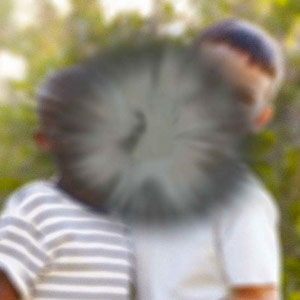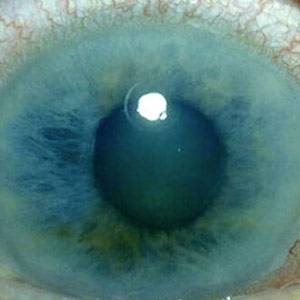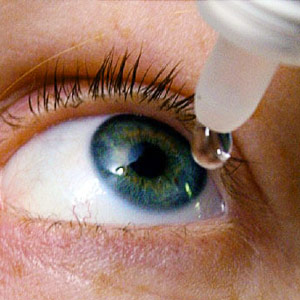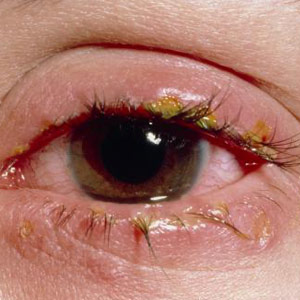Common Eye Conditions
There are many different eye conditions that affect people of all ages in Scotland. If you think you may have a problem with your eyes get in touch and we’ll give you a full examination.
There are many different eye conditions that affect people of all ages in Scotland. If you think you may have a problem with your eyes get in touch and we’ll give you a full examination.
If you’re concerned about any aspect of your eyesight you should contact your optometrist to have your eyes examined. The NHS recommends that you get your eyes tested every two years and if you are a resident in Scotland, these eye tests are free of charge.
 An eye test doesn’t just tell you if you need glasses, or, if you already wear glasses, that your eyes have changed and you need an updated prescription. An optometrist can learn a great many things about your general health from examining your eyes. Early diagnosis of health problems often means better outcomes for the patient.
An eye test doesn’t just tell you if you need glasses, or, if you already wear glasses, that your eyes have changed and you need an updated prescription. An optometrist can learn a great many things about your general health from examining your eyes. Early diagnosis of health problems often means better outcomes for the patient.
For example, health care professionals estimate that around 750,000 people in the UK are living with undiagnosed diabetes. This can potentially lead to blindness and in the most severe cases can be life-threatening.
Eye examinations can also detect signs of diabetes as well as brain tumours, multiple sclerosis, high blood pressure and heart disease.
Hughes & McHugh offer prompt diagnosis and treatment of a wide range of eye conditions. If you feel that you may have an issue with your vision call us right away and we’ll do everything we can to help.
 Floaters are a common eye symptom. Patients see a ‘black dot’ or ‘silhouette’ moving in their field of vision. They are caused by the jelly in the eye liquifying through time and pulling away from the retina. They are normally harmless and usually, the brain learns to ignore them through time, but It is always recommended to attend your optometrist to be assessed.
Floaters are a common eye symptom. Patients see a ‘black dot’ or ‘silhouette’ moving in their field of vision. They are caused by the jelly in the eye liquifying through time and pulling away from the retina. They are normally harmless and usually, the brain learns to ignore them through time, but It is always recommended to attend your optometrist to be assessed.
If accompanied by flashing lights then the patient needs to be examined urgently, as this can be indicative of a retinal tear, which in turn can lead to a retinal detachment. Any shadows in your field of vision, sudden increase in the number of floaters, pain or blurred vision should also be investigated as a matter of urgency.
 Patients with cataracts very often describe a ‘haze over their eyes or complain of ‘misty’ vision. Lights may dazzle and night-time driving can be difficult.
Patients with cataracts very often describe a ‘haze over their eyes or complain of ‘misty’ vision. Lights may dazzle and night-time driving can be difficult.
This is because the crystalline lens inside the eye becomes cloudy and less transparent. It is a common part of the aging process but can also occur in patients with diabetes or those on steroids. It can also be caused by too much exposure to UV light. Some children are even born with cataracts.
If a change in spectacle prescription is not beneficial, an eye operation may be required to remove the cataract and replace it with a plastic implant.
 Macular degeneration is a condition that affects central vision. It is the most common cause of visual loss in the civilised world. The macula, the part of the retina responsible for central sight, becomes damaged and a central scotoma (a blind spot) develops. Straight lines can appear wavy and people can struggle to perform simple everyday tasks. Peripheral vision is unaffected. Risk factors include age, smoking, diabetes, diet, and high blood pressure.
Macular degeneration is a condition that affects central vision. It is the most common cause of visual loss in the civilised world. The macula, the part of the retina responsible for central sight, becomes damaged and a central scotoma (a blind spot) develops. Straight lines can appear wavy and people can struggle to perform simple everyday tasks. Peripheral vision is unaffected. Risk factors include age, smoking, diabetes, diet, and high blood pressure.
There are two types of macular degeneration: Dry and Wet. In dry macular degeneration, the deterioration in vision tends to be gradual and accounts for 90% of those diagnosed with the condition.
In wet macular degeneration, the drop in vision can be more sudden. Patients may require injections to help prevent any further deterioration.
 Primary open-angle glaucoma, the most common type of glaucoma, is a condition in which the optic nerve becomes damaged due to elevated ‘eye pressure’. As a result, blind spots occur in the field of vision and the damage tends to be irreversible. It is more common in people over 40, with a family history of the disease, who are short-sighted, and those of African or Caribbean origin.
Primary open-angle glaucoma, the most common type of glaucoma, is a condition in which the optic nerve becomes damaged due to elevated ‘eye pressure’. As a result, blind spots occur in the field of vision and the damage tends to be irreversible. It is more common in people over 40, with a family history of the disease, who are short-sighted, and those of African or Caribbean origin.
Glaucoma is often referred to as a ‘silent’ disease meaning that people may not know they have the condition until significant damage has been done, underlying the need for regular eye checks. If someone is diagnosed with glaucoma, they may require eye drops to keep the pressure within normal limits.
Acute glaucoma may present as an ache or intermittent pain and can often be accompanied by blurred vision. This is due to the drainage mechanisms inside the eye becoming blocked or damaged. If you experience any of these symptoms you should contact your optometrist immediately.
 Dry Eye is a common eye condition that usually presents as tired, gritty, or irritable eyes which may also appear red.
Dry Eye is a common eye condition that usually presents as tired, gritty, or irritable eyes which may also appear red.
Patients may experience heavy eyes and difficulty maintaining focus for any length of time. Poor quality tears, or your tears evaporating too quickly, are the main causes of dry eye.
These symptoms are often exacerbated by excessive screen time, driving for long periods or hot, dusty environments, although often it is simply a symptom of advancing age.
If a patient suffers from these symptoms an optometrist may issue you eye drops to help alleviate them.
 Blepharitis is a disease of the lid margins. It usually presents with symptoms similar to dry eyes, indeed the two are often interlinked. Irritable, crusty, burning lids and lashes are the most common presentation.
Blepharitis is a disease of the lid margins. It usually presents with symptoms similar to dry eyes, indeed the two are often interlinked. Irritable, crusty, burning lids and lashes are the most common presentation.
There are two types of blepharitis: anterior and posterior. In anterior blepharitis, the base of the lashes is affected, and the lid margins are often red and inflamed.
Posterior blepharitis has similar symptoms to its anterior counterpart but in this case, the glands around the base of the lashes can become blocked.
Often warm compresses and good lid hygiene are enough to treat blepharitis but in some cases, an antibiotic may be required.

Airdrie
10B Anderson Street, Airdrie, ML6 0AA. Call: 01236 755213
Lanark
14 Bannatyne Street, Lanark, ML11 7JR. Call: 01555 665848

Baillieston
10 Main Street, Baillieston, G69 6SJ. Call: 0141 771 5501
Uddingston
313 Old Edinburgh Rd, Uddingston, G71 6BP. Call: 01698 811400
© 2021 MCHUGH, MADDEN & SHAW LIMITED. ALL RIGHTS RESERVED.